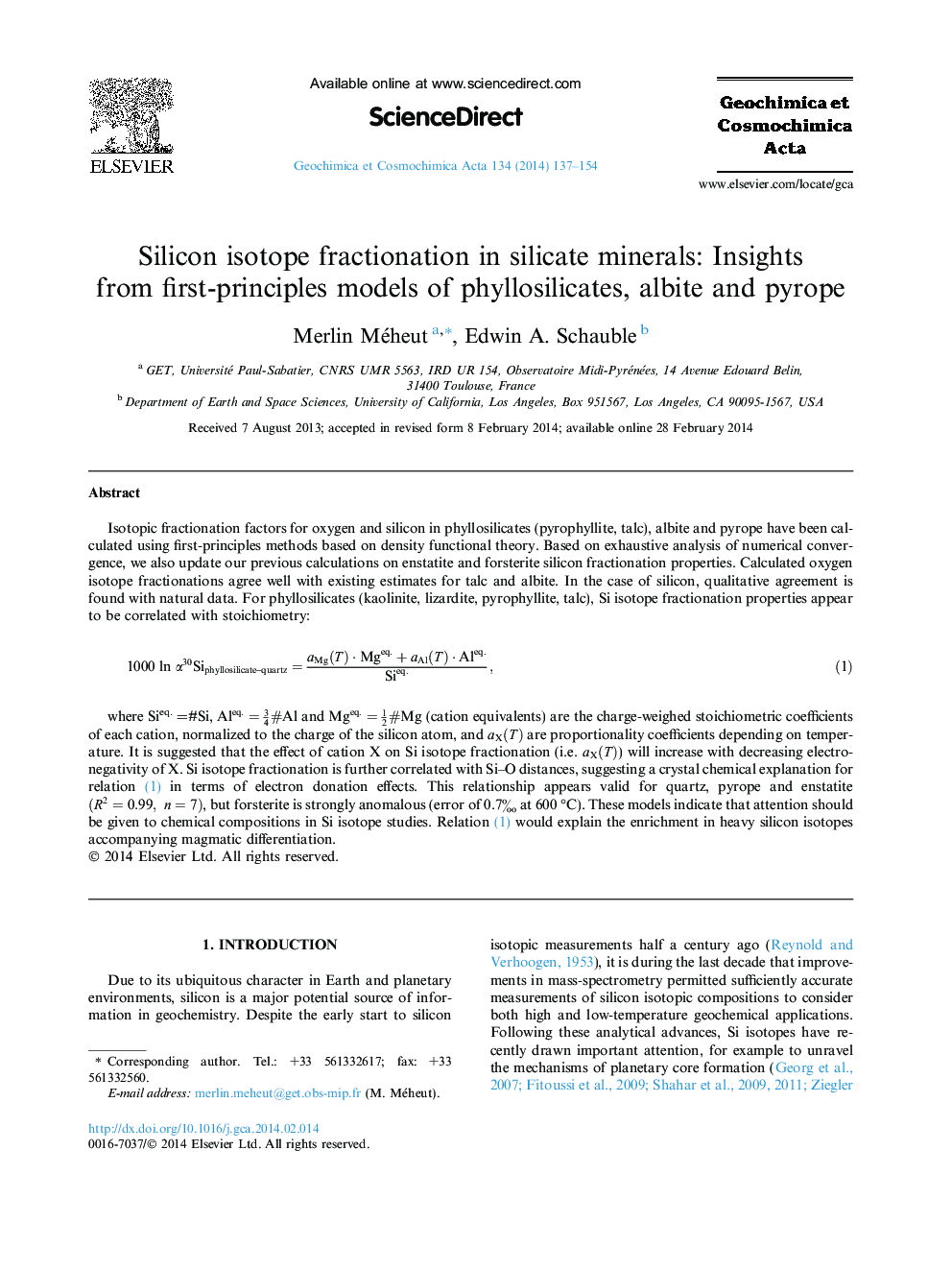| Article ID | Journal | Published Year | Pages | File Type |
|---|---|---|---|---|
| 4702102 | Geochimica et Cosmochimica Acta | 2014 | 18 Pages |
Isotopic fractionation factors for oxygen and silicon in phyllosilicates (pyrophyllite, talc), albite and pyrope have been calculated using first-principles methods based on density functional theory. Based on exhaustive analysis of numerical convergence, we also update our previous calculations on enstatite and forsterite silicon fractionation properties. Calculated oxygen isotope fractionations agree well with existing estimates for talc and albite. In the case of silicon, qualitative agreement is found with natural data. For phyllosilicates (kaolinite, lizardite, pyrophyllite, talc), Si isotope fractionation properties appear to be correlated with stoichiometry:equation(1)1000lnα30Siphyllosilicate–quartz=aMg(T)·Mgeq.+aAl(T)·Aleq.Sieq.,where Sieq. =#Si, Aleq.=34#Al and Mgeq.=12#Mg (cation equivalents) are the charge-weighed stoichiometric coefficients of each cation, normalized to the charge of the silicon atom, and aX(T)aX(T) are proportionality coefficients depending on temperature. It is suggested that the effect of cation X on Si isotope fractionation (i.e. aX(T)aX(T)) will increase with decreasing electronegativity of X. Si isotope fractionation is further correlated with Si–O distances, suggesting a crystal chemical explanation for relation (1) in terms of electron donation effects. This relationship appears valid for quartz, pyrope and enstatite (R2=0.99,n=7), but forsterite is strongly anomalous (error of 0.7‰ at 600 °C). These models indicate that attention should be given to chemical compositions in Si isotope studies. Relation (1) would explain the enrichment in heavy silicon isotopes accompanying magmatic differentiation.
